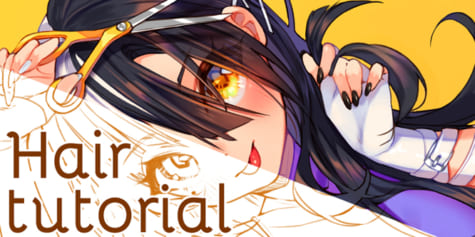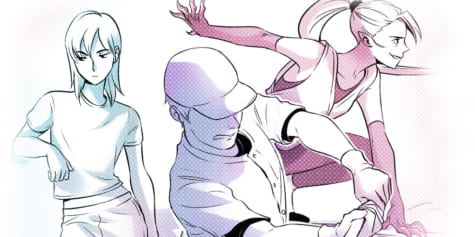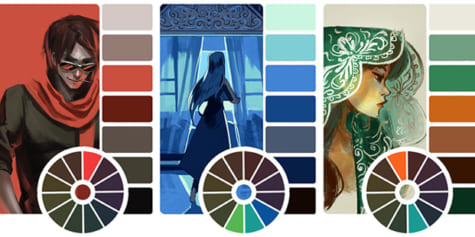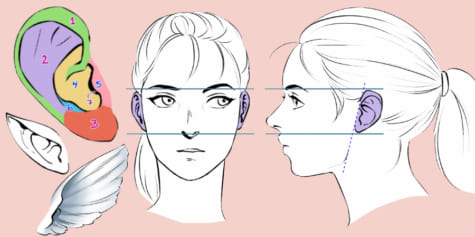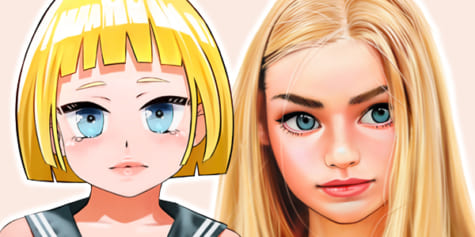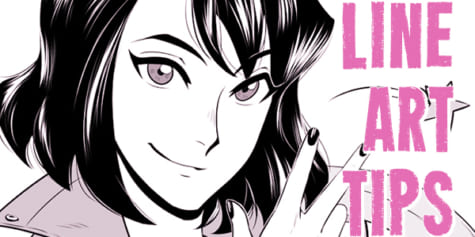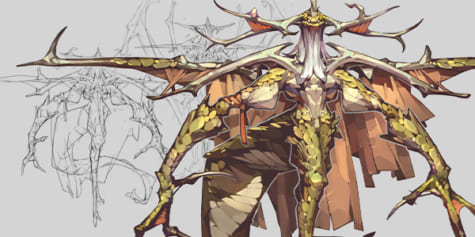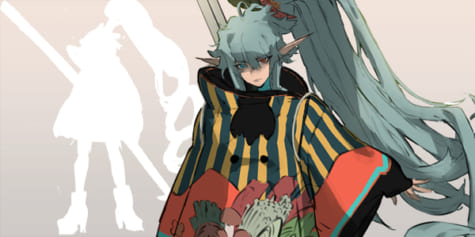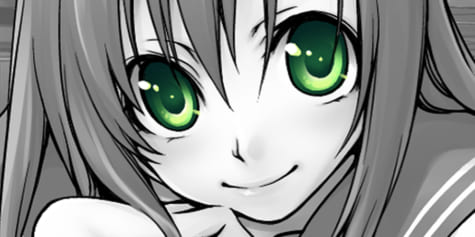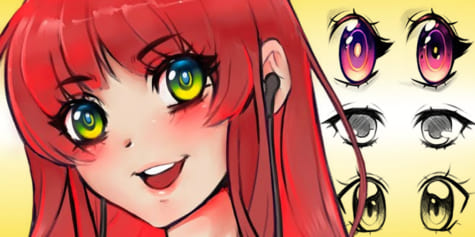How to Draw Hair: 3 Tips for Beginners
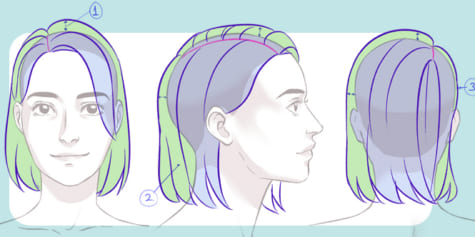
Learn easy techniques for drawing all types of hair and hairstyles for your male and female characters in this tutorial by illustrator Eridey!
Hair is a very important point of expression for our characters, so drawing hair exactly as we imagine it can be a real challenge. I try to simplify and break it down and think three-dimensionally, then consider the volume and shape of the hair form with drawing hair.
Whether drawing realistic hair or in an anime style, we can take many different approaches! For me, the most important rule is to understand what I am drawing, so that I don’t get lost halfway through. Keep reading for tips on how to define hair shapes, draw different types of hair, and add texture!
Contents
1. Hair Construction and Hair Volume
First, when drawing male or female hair, we must define the hairline and hair sections. It can help to mark a reference point or route that divides the hair, such as at the hair parting (1). From there, it becomes easier to see the direction that each section of hair will take (2).
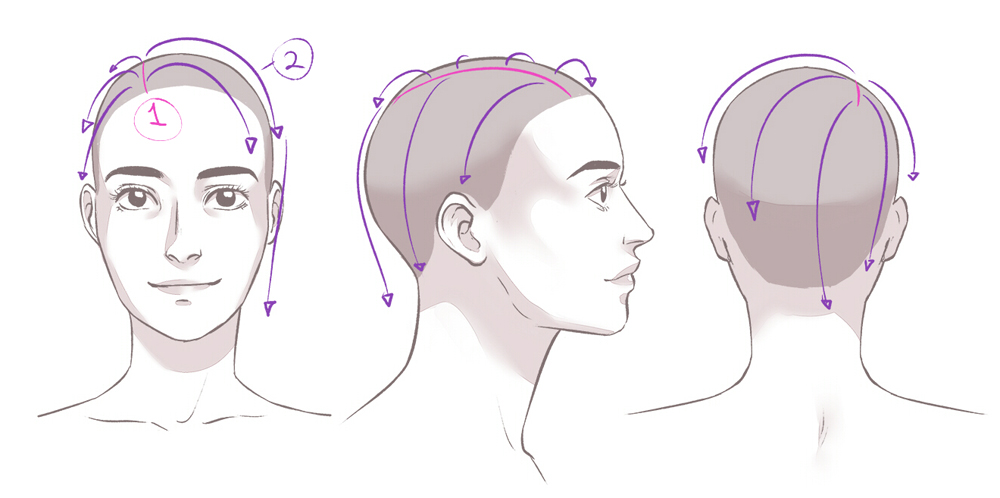
As I develop my sketch, I can consider possible hairstyles. This character will have straight hair that’s cut just over the shoulders. I think no bangs would be nice, but I want some hair to cover one eye, and the tips of the hair to curl inwards. I might change my mind later on, but this stage allows me to see my hair ideas more clearly as I start to draw these lines.
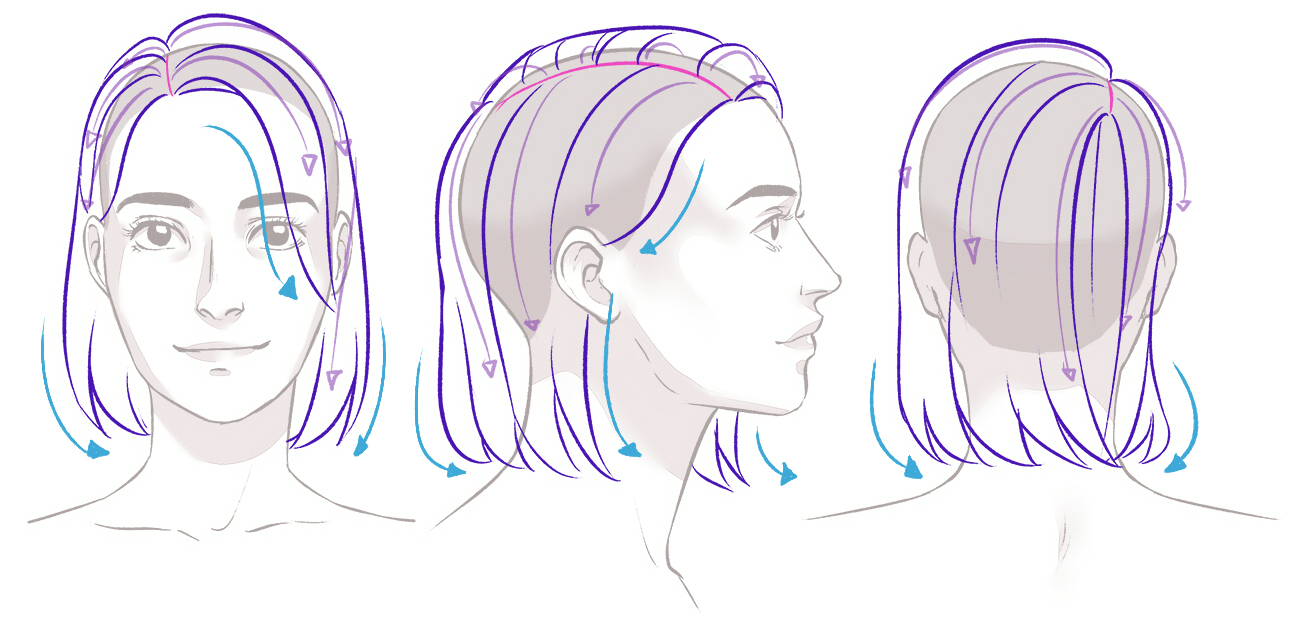
Take into account that heads are spherical and not a flat oval. This is a fairly common drawing error. Let’s have a look using a mesh to demonstrate:
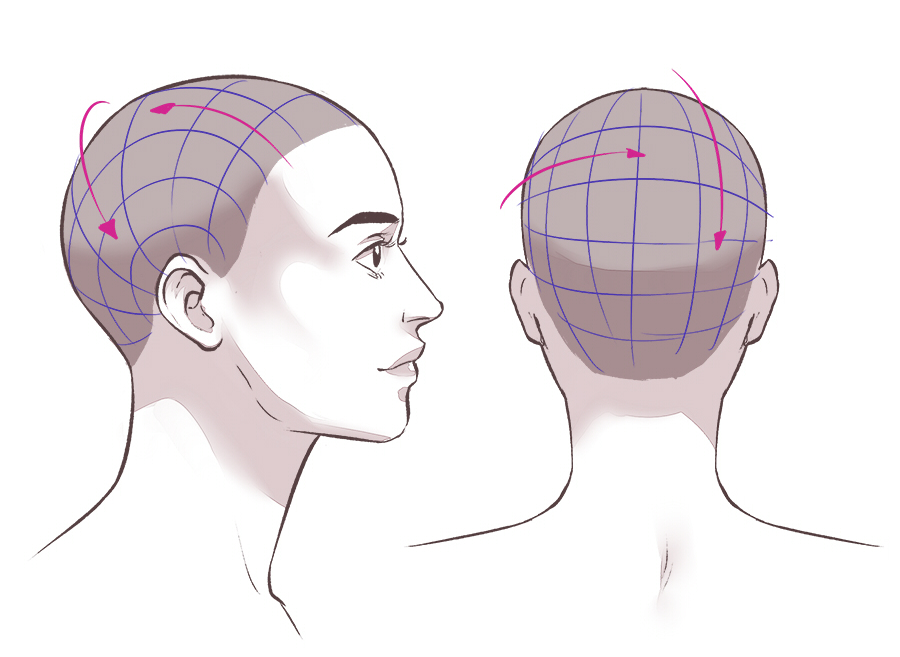
Each strand of hair comes from a specific point and grows in a different direction. Even when the hair is very long, the gravitational force eventually brings it down.
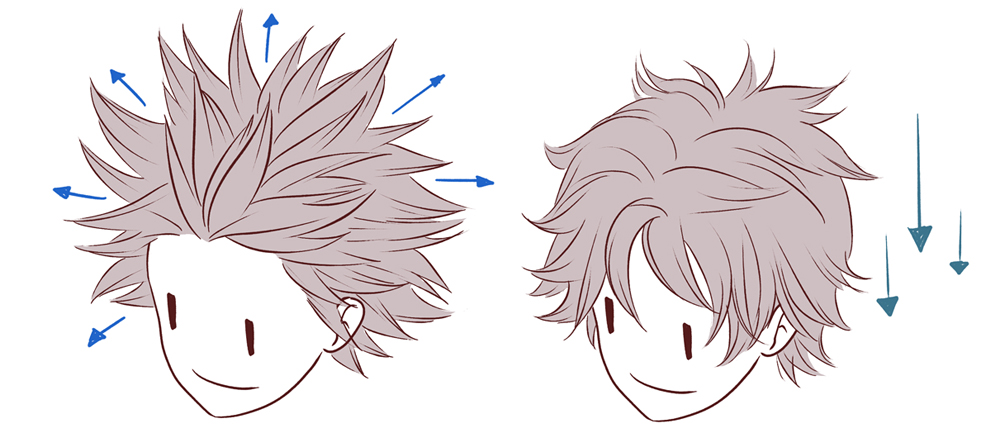
Hair locks must somehow wrap around the head following the curves of its surface. Check the difference between the two images below. Both circles have a layer around them, but A looks more like a flat shape, whereas B appears more spherical.
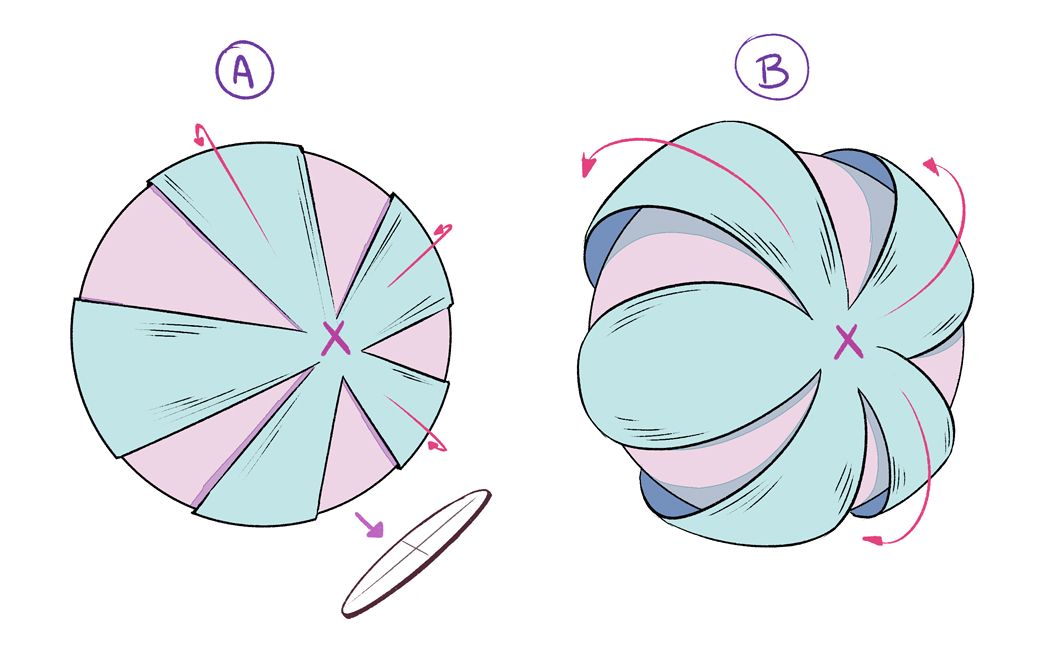
Hair does not glue itself to the head. Let’s keep in mind that there is always space between strands and over layers of hair, which builds up to create volume.
Hair Construction Breakdown
The green area (1) indicates the gap between the head and the edge of the hair. On the back of the head (2) there are several layers of hair, but since it’s straight hair, the edges are almost unaffected, which allows a very subtle falling around the neck. The volume varies depending on the amount of hair on each side of the head (3).
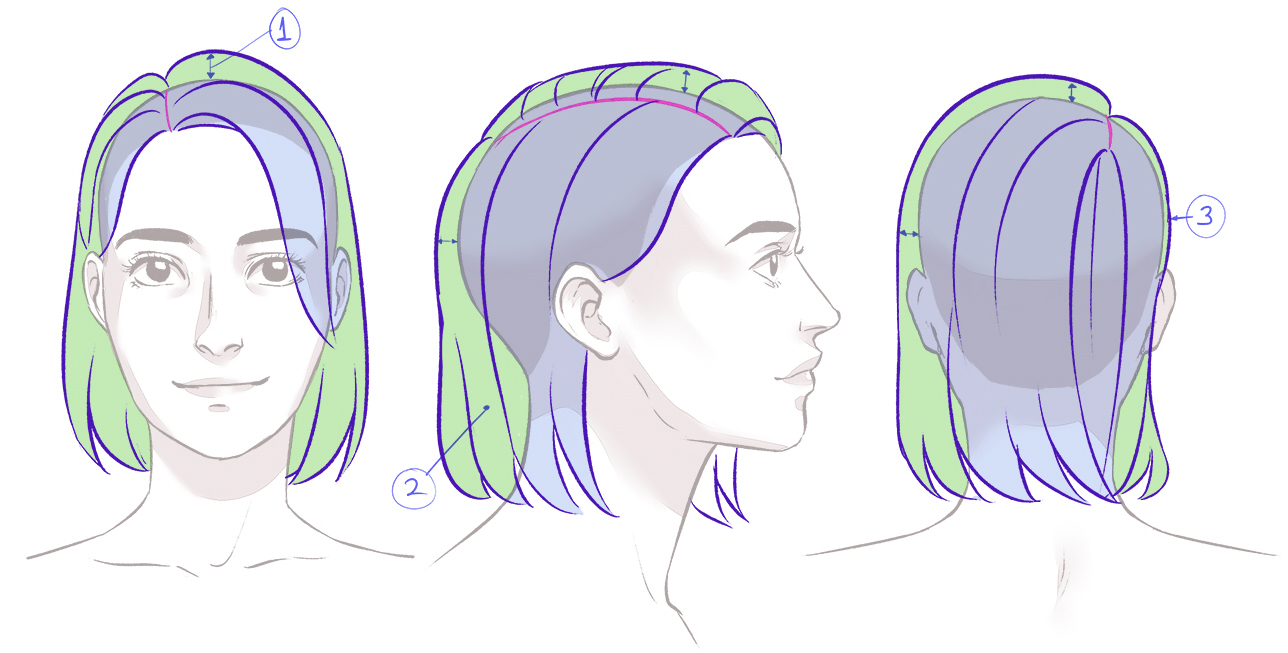
For easy hair drawing, many artists choose to simplify the hair using basic shapes, or anything else that helps them define the volume, the angles, and to easily approach values. Then they add details to the surface.
How to Practice Drawing Hair
I always recommend learning using real-world hair references. Take some photos of hairstyles and identify where the locks are coming from and where they are going. You can also draw their outline.
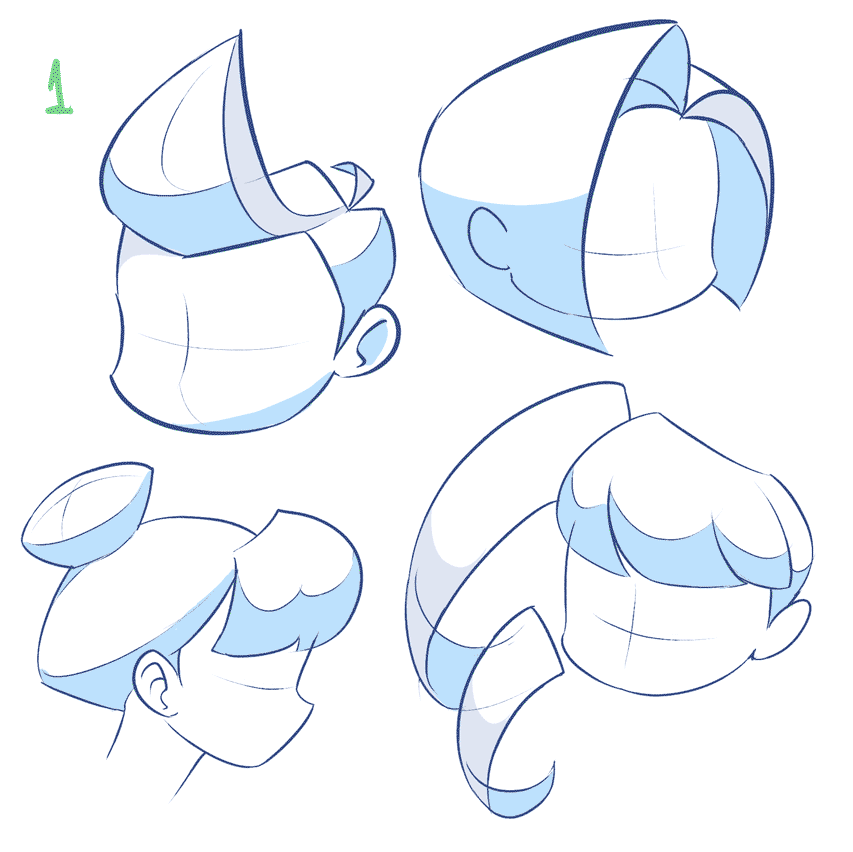
Animated GIF
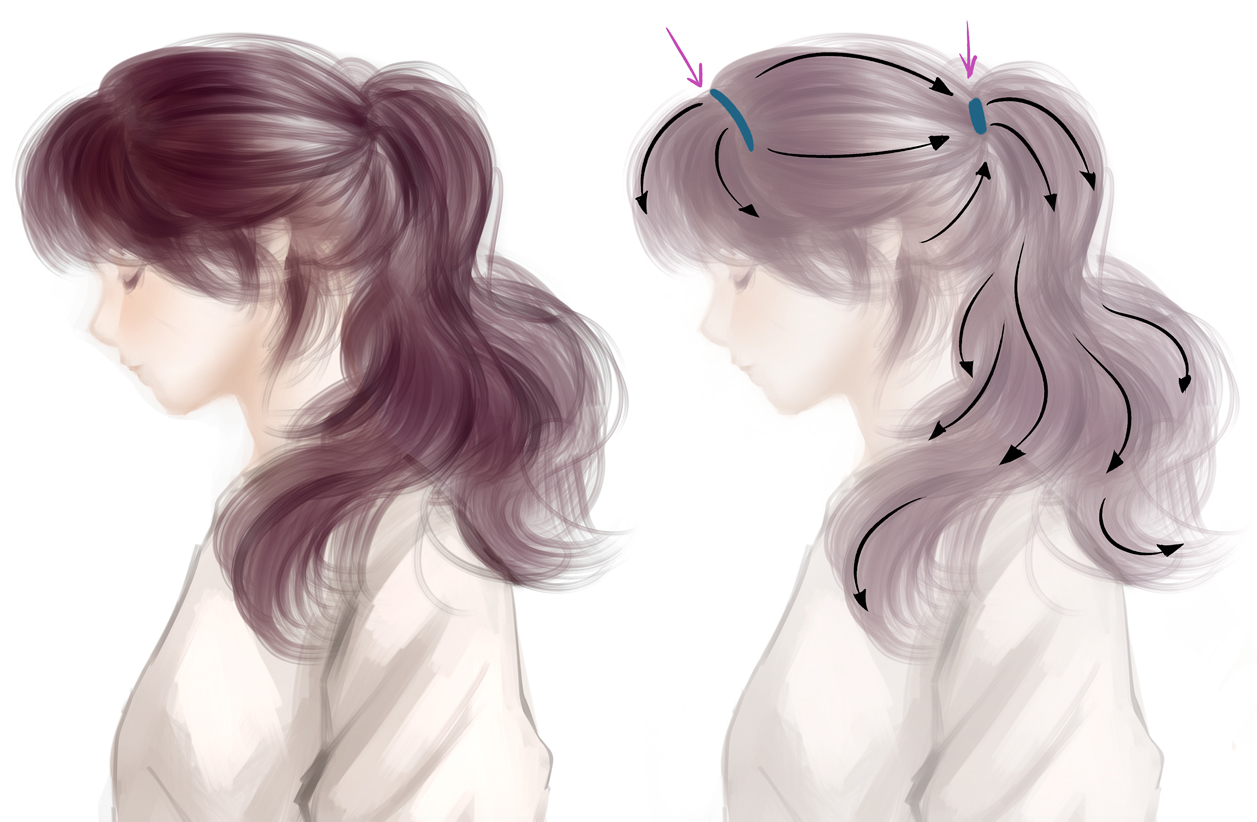
2. Shape
Some drawing styles and hair styles demand more effort in the detailing stage than others, but it is always necessary to take into account the standard characteristics of hair.
Let’s look at it this way: Overall hair is a set of many clumps of hair or locks, which are a bundle of strands. Hair does not form a compacted shape, nor a consistent one. It is very light, so when the character moves, the wind, the humidity, or anything that surrounds it can affect its silhouette.
Let’s see some examples, step by step.
How to Draw Wavy Hair
My first step is to draw the outline of the main lock (the one that will be the base of our drawing), following the direction in a S shape. Then I fill it in to create its silhouette. The little strands on Step 3 follow a very similar direction, but slightly more pronounced, enough to add dynamism to the shape of the hair clump. Finally, I add some strands that move in completely different directions from the original one to balance the drawing composition and make it more attractive.
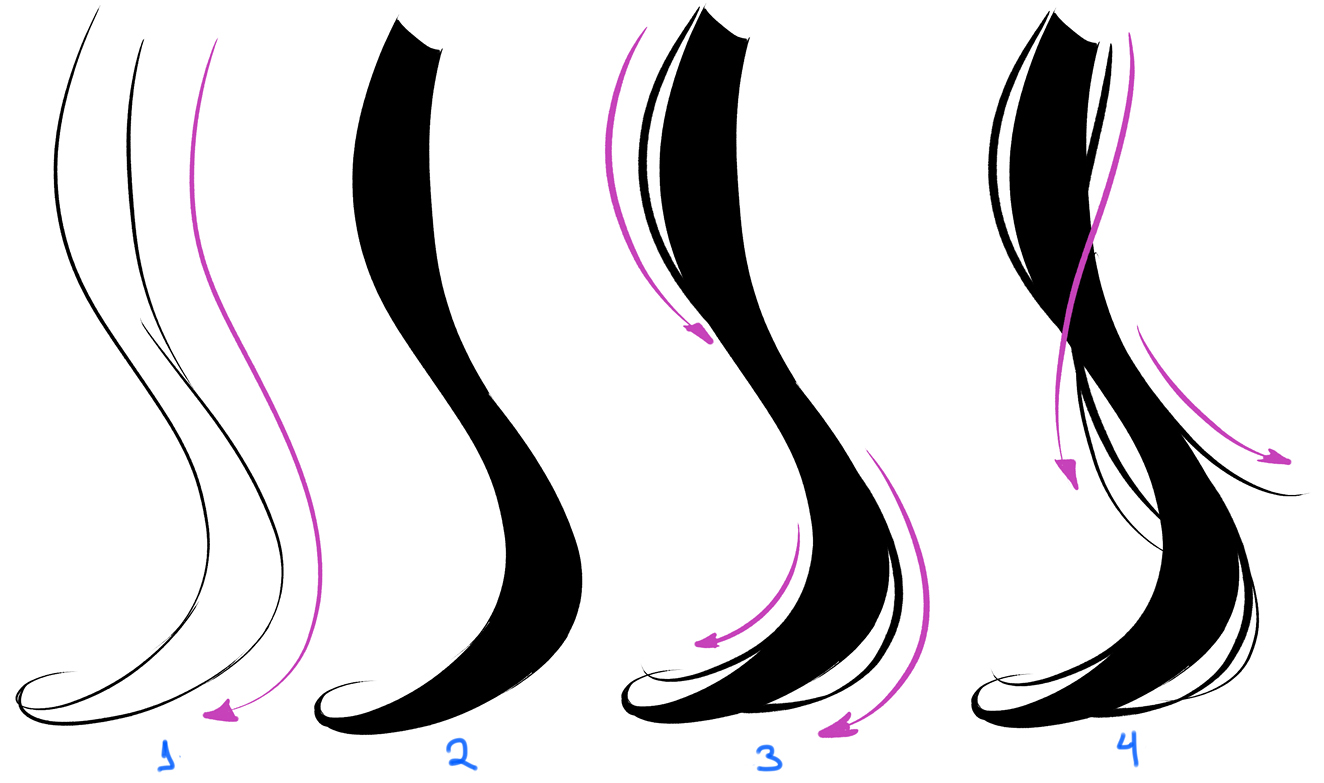
How to Draw Curly Hair
Remember when drawing hair curls that the lock curls itself around in a cylindrical shape. Try not to make this shape completely straight, otherwise the lock will end up looking like a spring! Then I simplify, first drawing a ribbon. See how it becomes thinner as it approaches the tip. The third step is to detail the external and internal sides (A). I add some texture, following the direction of the curves. I also include some irregularities around the edges to match the surface (B).
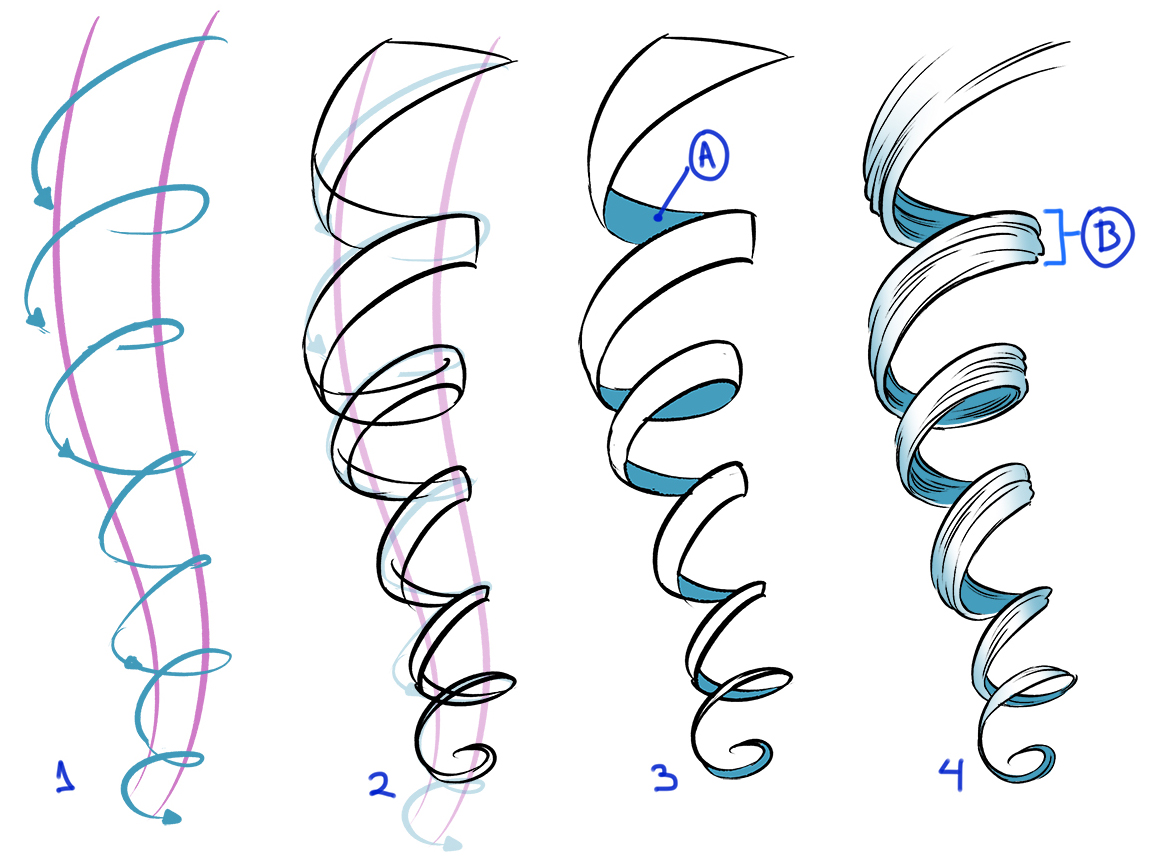
We can use this method to create more interesting and complex hair silhouettes. Check out the examples below and try drawing some of your own:
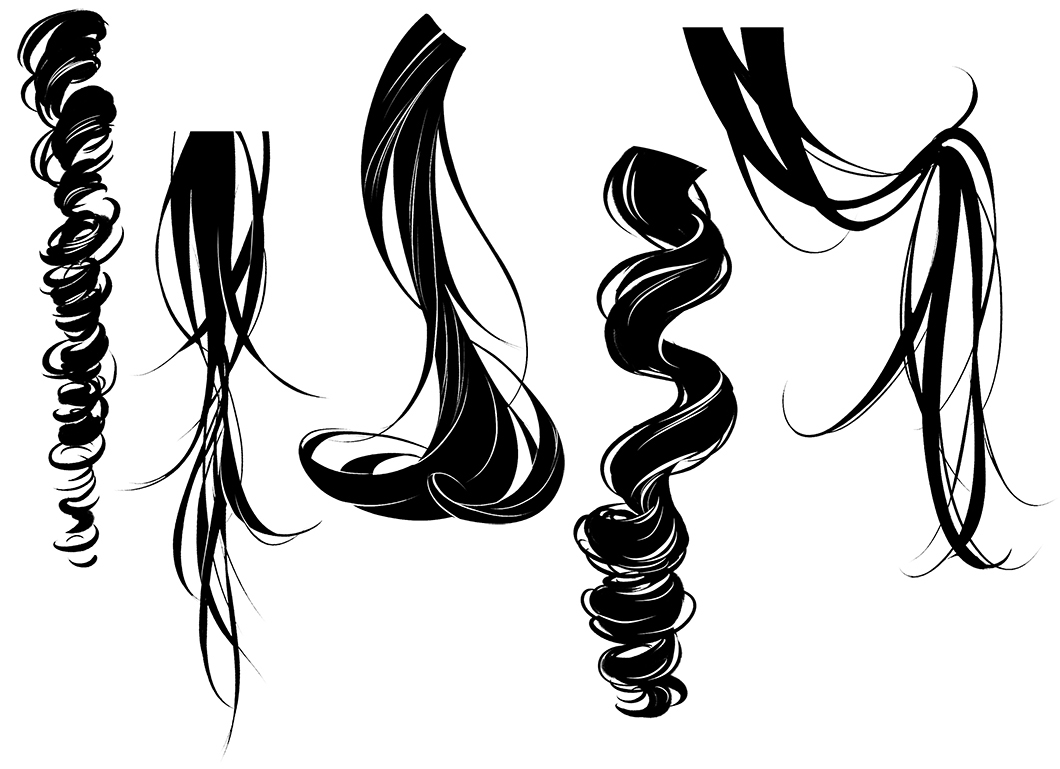
I follow all these criteria to brush up my character and then I add the necessary amount of detail while keeping it simple.
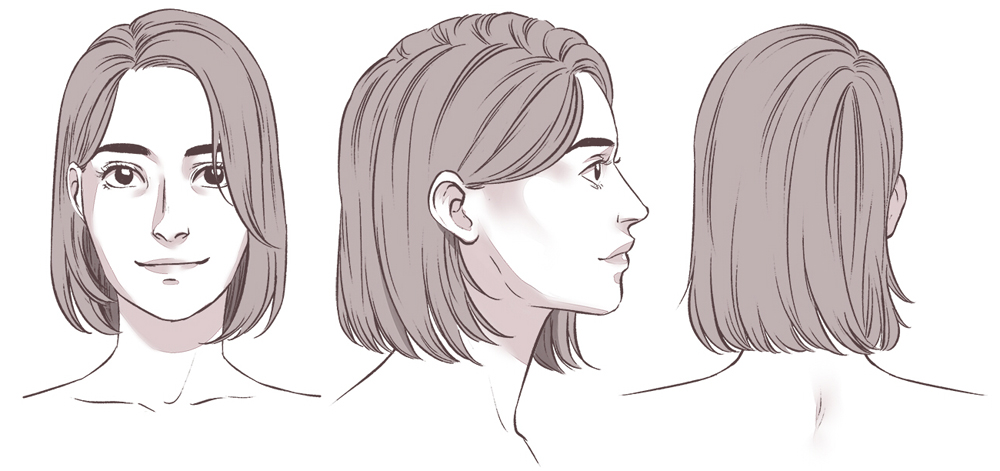
3. Adding Values
I am going to use the value scale to define details and give a 3D effect to the hair shapes.
The sample image below includes hairstyles consisting of irregular layers and overlapping locks. If we only had the silhouette, we wouldn’t notice all these details, thus I need to contrast the different sections in order to highlight these shapes.
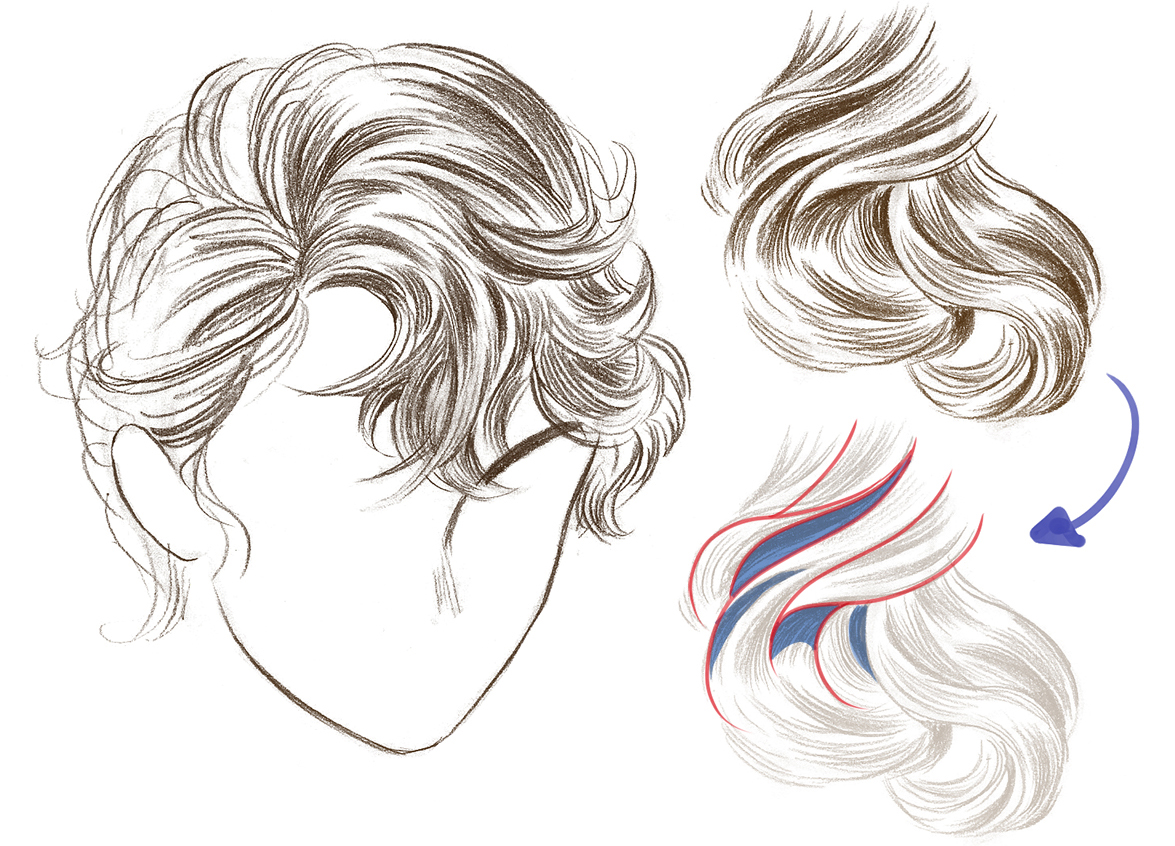
This is the step-by-step hair drawing process which will help us understand it better:
First, I define the edges (1). In step 2, the mid-tones can be seen in the corner; the strokes follow a single direction to maintain the harmony of the shape, and the illuminated areas are left blank.
In step 3, we build up the strokes to apply darker shades to darken and deepen some areas, for example, on the overlapping layers as indicated by the arrows. I continue this way until the drawing is finished.
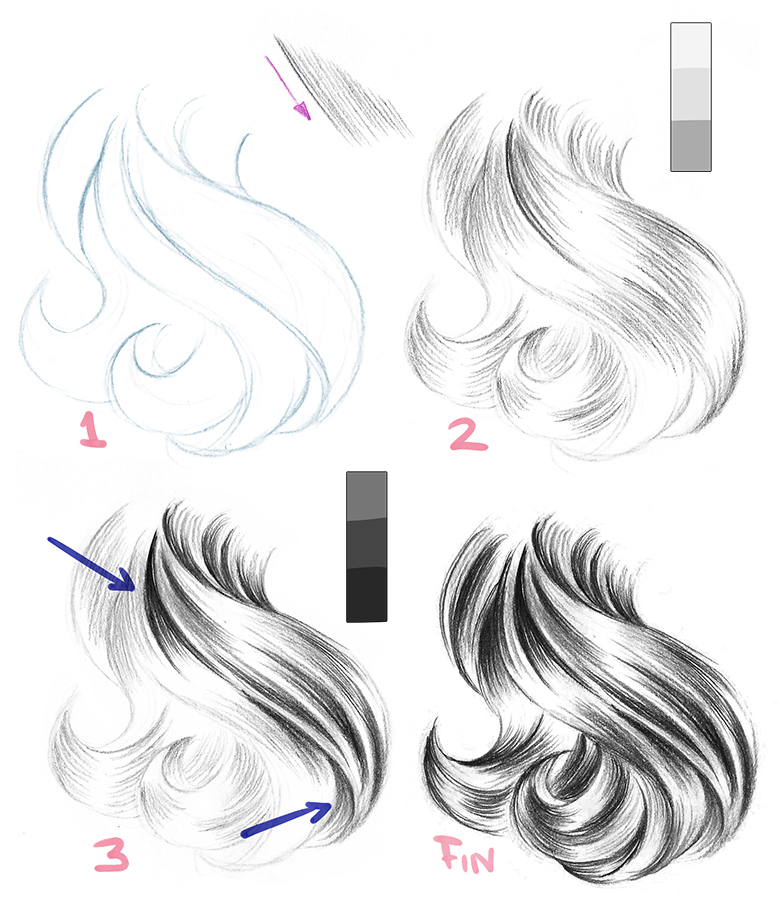
Try to follow your intuition when drawing shadows and highlights for hair. “Lighting” is an extensive and super interesting topic, and I am afraid that what I explain here is not enough to cover it! I’d recommend researching and practicing as much as possible.
Hair Types and Textures
Textures create unique sensations and enrich our illustrations. It may be overwhelming to think about hair textures, but don’t limit yourself with just lines. There are tools that can make tasks easier as well as create incredible effects, both in digital and traditional art spaces.
It is always good to experiment to develop drawing methods that highlight the qualities of our style! I don’t have a unique answer to which tool to use in each case, but here is a clue: imagine the feeling of each type of hair!
I’ve always thought that short, almost shaved hair feels like a carpet! And when I draw it, I like to give it a prickly, pointy, rough appearance.
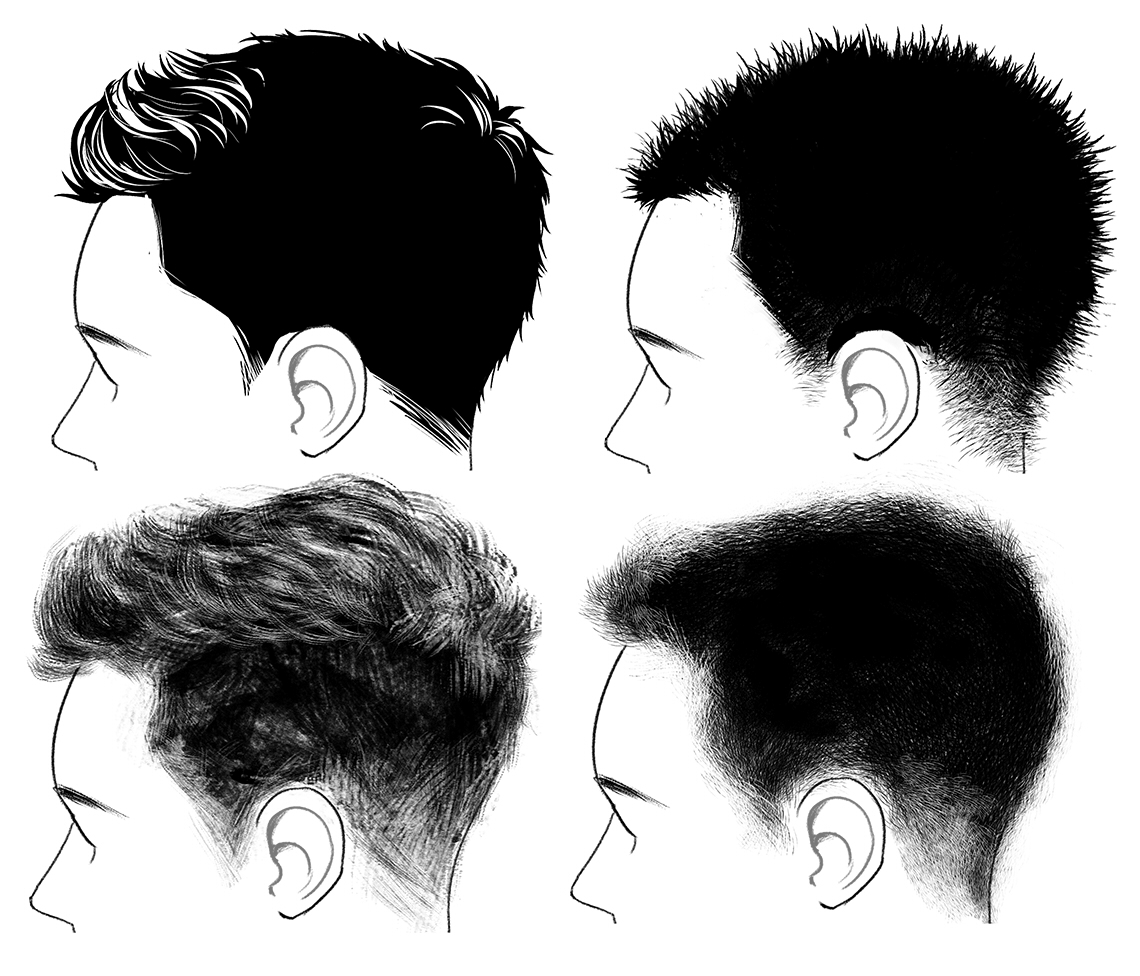
For wavy hair, I think about the sea waves, curves finding one another. There is life, energy, and movement.
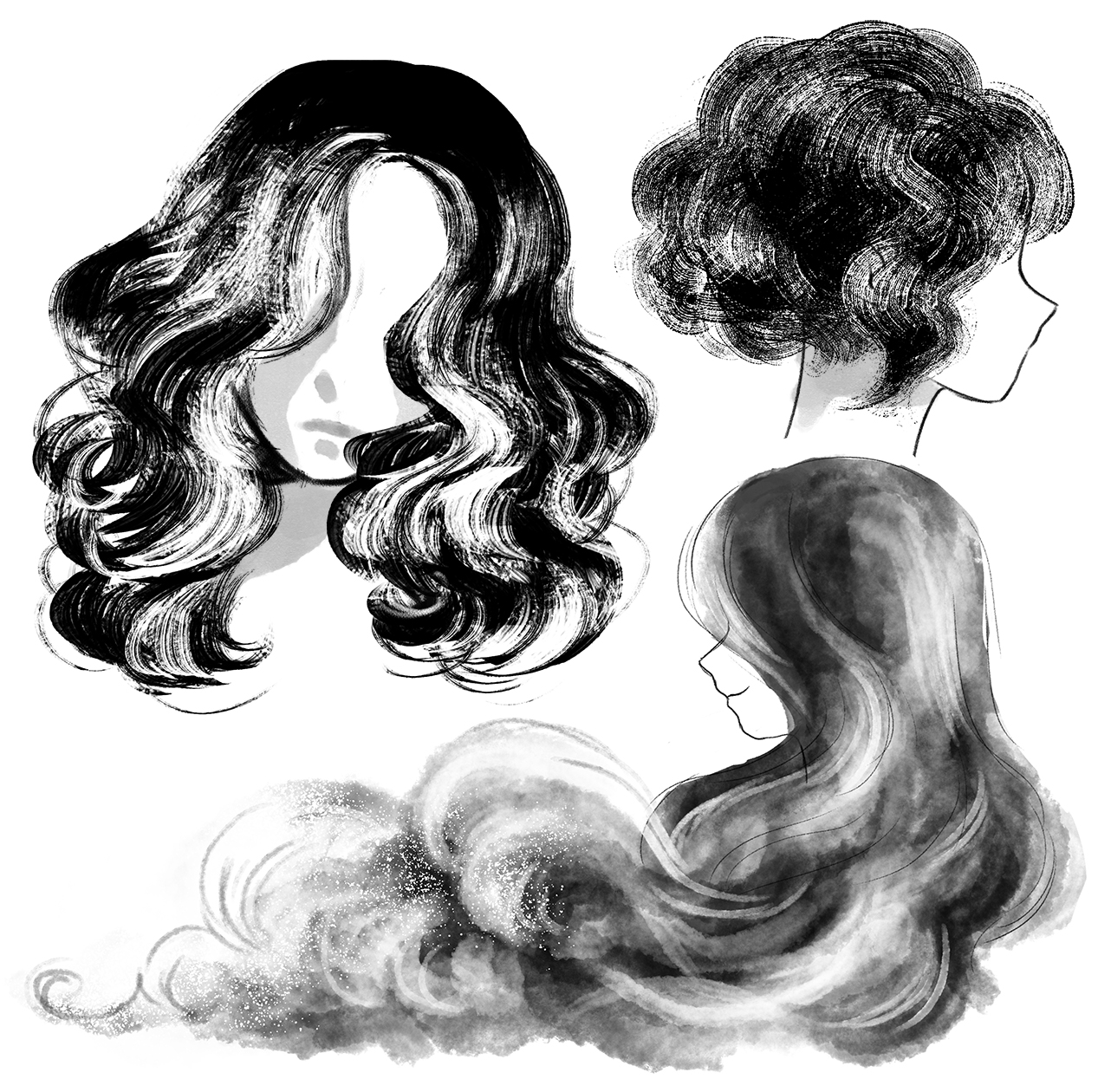
On the other hand, straight hair has serene, calm, simple and elegant lines. Explosive —but not too much, curly hair is voluminous, hard to control, and in many cases, hard to comb! Fluffy, soft, playful, and gorgeous are some adjectives we can think about for curly hair. Textures save time and add complexity to the hair shapes.
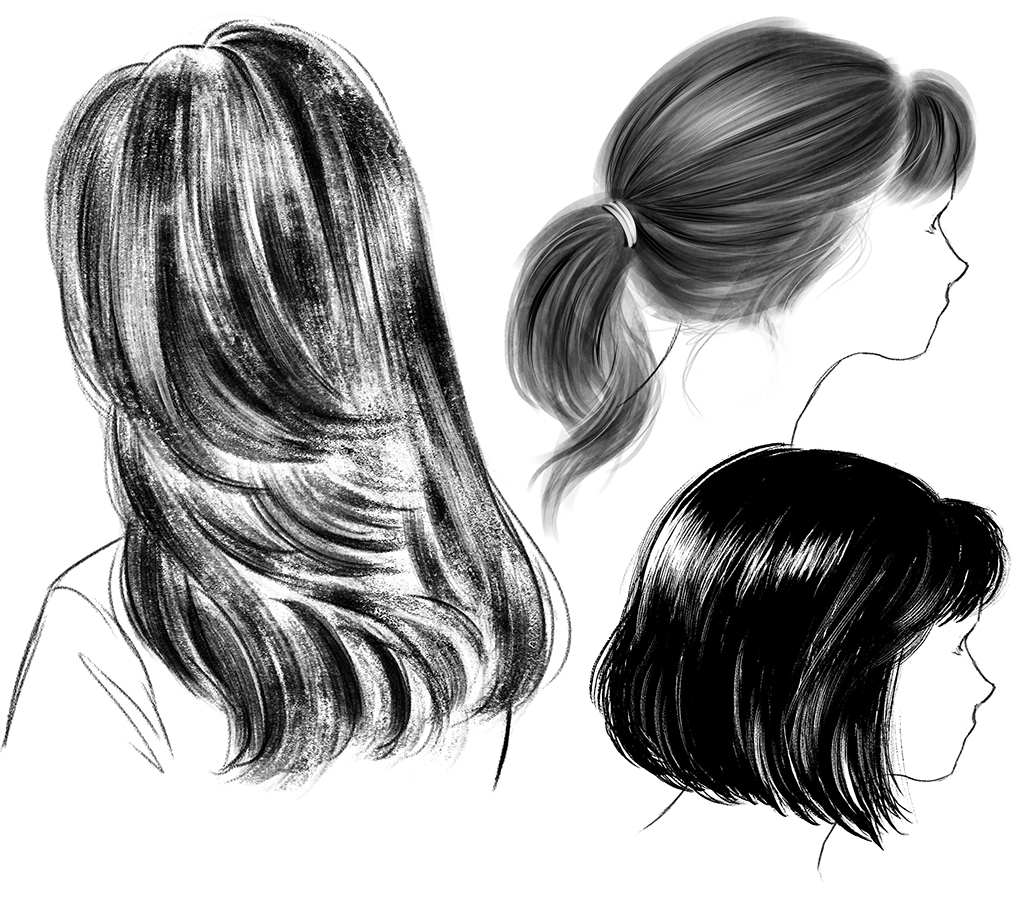
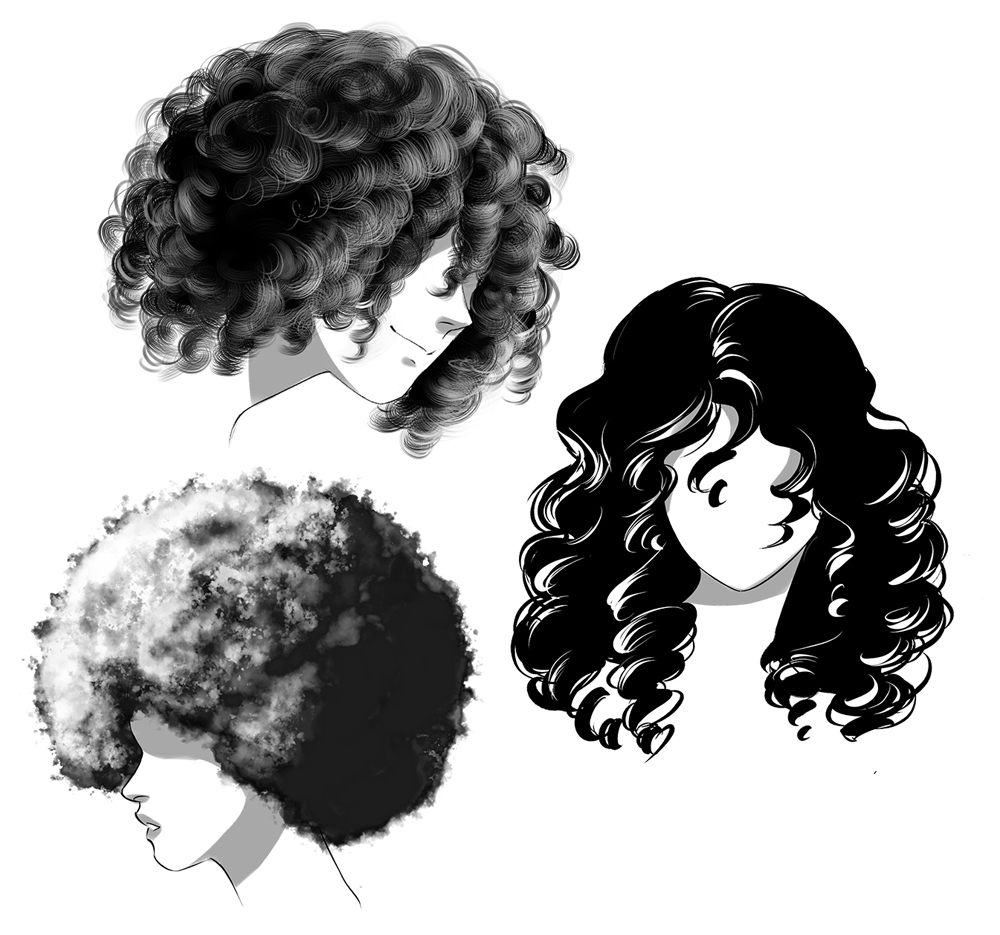
Conclusion
These are all approaches that we can use to make our drawings look like hair. If you want to go further, break the rules! There is nothing wrong with ignoring gravity, or exaggerating the volume of hairstyles, or creating hair made of fire! There are so many possibilities we can play with to create new things. I hope this article on how to draw hair has been helpful for you.
If you wish to see some of my works, please have a look at my social networks and my portfolio:
Thanks very much for reading!
Like this guide? Check out more helpful art tutorials by Eridey!
Tips for Drawing Digital Anime Line Art!
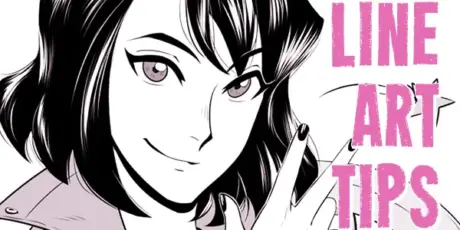
Interested in character art & design or what it takes to become a character designer? Check out the link below!








